How to Rotate Your Tires to Get as Much Use as Possible Out of Them
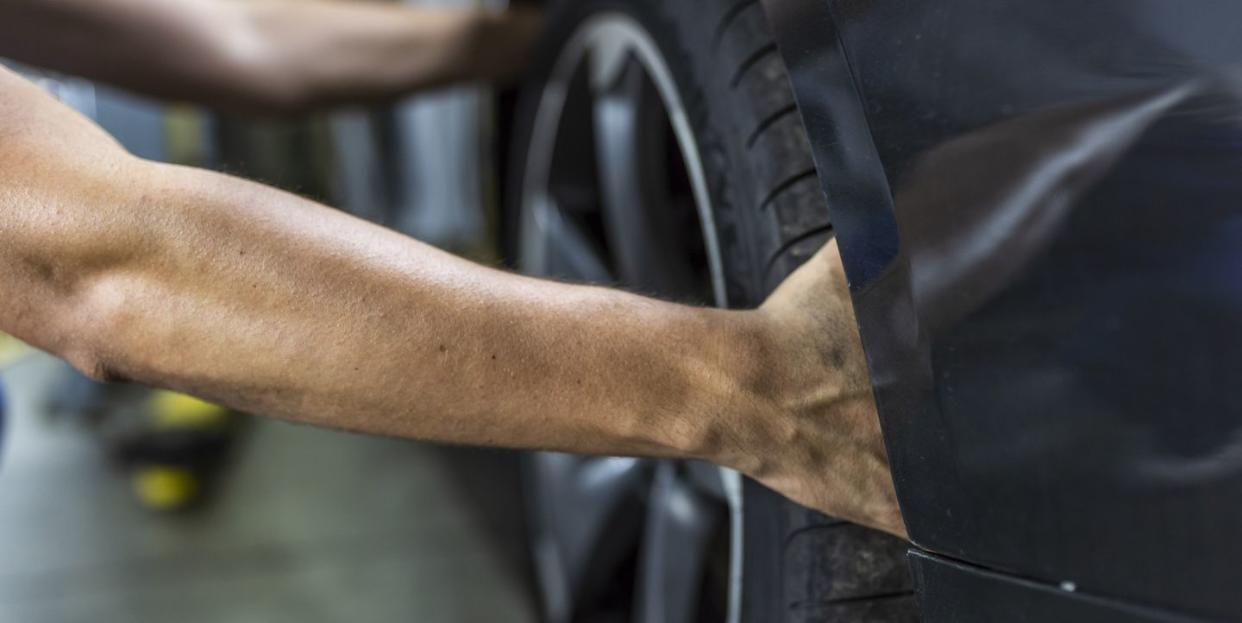
Tires are expensive, so you want to make them last as long as possible.
It is incredibly frustrating to replace tires that are only worn out on one side. To avoid that, you need to rotate your tires periodically. If one side looks more worn than the other, it’s probably time to shift these tires around to other places on the car.
Guidelines on how often to rotate your tires range from every 3,000 miles to every 8,000 miles, but these are just guidelines. It’s worth looking at your tires regularly for uneven wear even if your tire’s manufacturer says you can wait longer. And softer tires, like performance-oriented summer tires, tend to require more frequent rotation than their harder counterparts.
No matter what kind of car you drive, the tires at each corner are all doing a slightly different job, which means they wear differently. Front-wheel-drive cars in particular make their front tires work much harder than the ones in the back. The front pair bears all the burden of accelerating and turning as well as most of the forces of braking. Front-engine front-wheel cars also carry most of their weight on the front end, which adds a bit more load onto those tires.
You’re not off the hook if you drive a rear- or all-wheel-drive vehicle, though. Any car will wear its tires in different ways just because of the peculiarities of that particular car’s suspension or alignment. So you want to rotate them—if you can.
The Most Important Step: Making Sure You Can Rotate
The first thing you need to do is figure out whether you even can rotate your car’s tires. The easiest way to rotate tires is by moving wheels to different locations on the car, but you can’t do that on every car.
Cars sometimes use directional tires where the tread pattern is designed to work in only one direction. This direction is denoted by an arrow on the sidewall that points in the direction the tire rotates, or more generally by a V-shaped tread pattern. You can swap these wheels and tires from front to back yourself with relative ease. However, you can’t swap these tires from side to side without having someone dismount the tire from the wheel, since changing sides as-is would flip the tread pattern in the wrong direction.
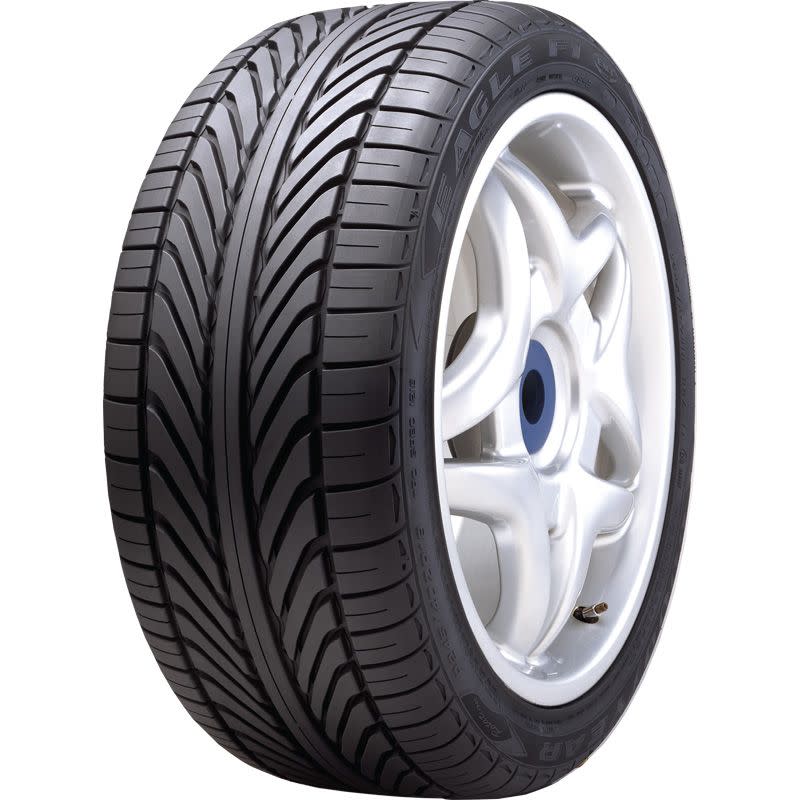
Many performance cars use staggered tire sizes, which usually means that the rear tires are larger than the fronts (though not always, as demonstrated by the wider front tires on the Audi RS3). In this case, you can’t slap your wide rear tires on the front. You can only rotate tires to the other side of their given axle, which means you’ll need someone to dismount and remount the tire to fit on the wheel on the other side.
Another issue is wheel size—particularly, the measurement for the wheel’s offset. Offset refers to the distance from the centerline of the wheel to the mounting hub. This determines whether a wheel clears vital braking and suspension components, or if it works with the suspension geometry at all. Some cars, such as the 2014 Chevrolet Camaro Z/28, might have the same size tires on all four corners, but slightly different wheels with different offsets.
In this case, you may be able to swap wheels from side to side if the tires aren’t directional, however, you will have to dismount and remount tires to swap them from front to back. Check your owner's manual on that one since it won't be obvious just by looking.
How to Rotate Your Tires
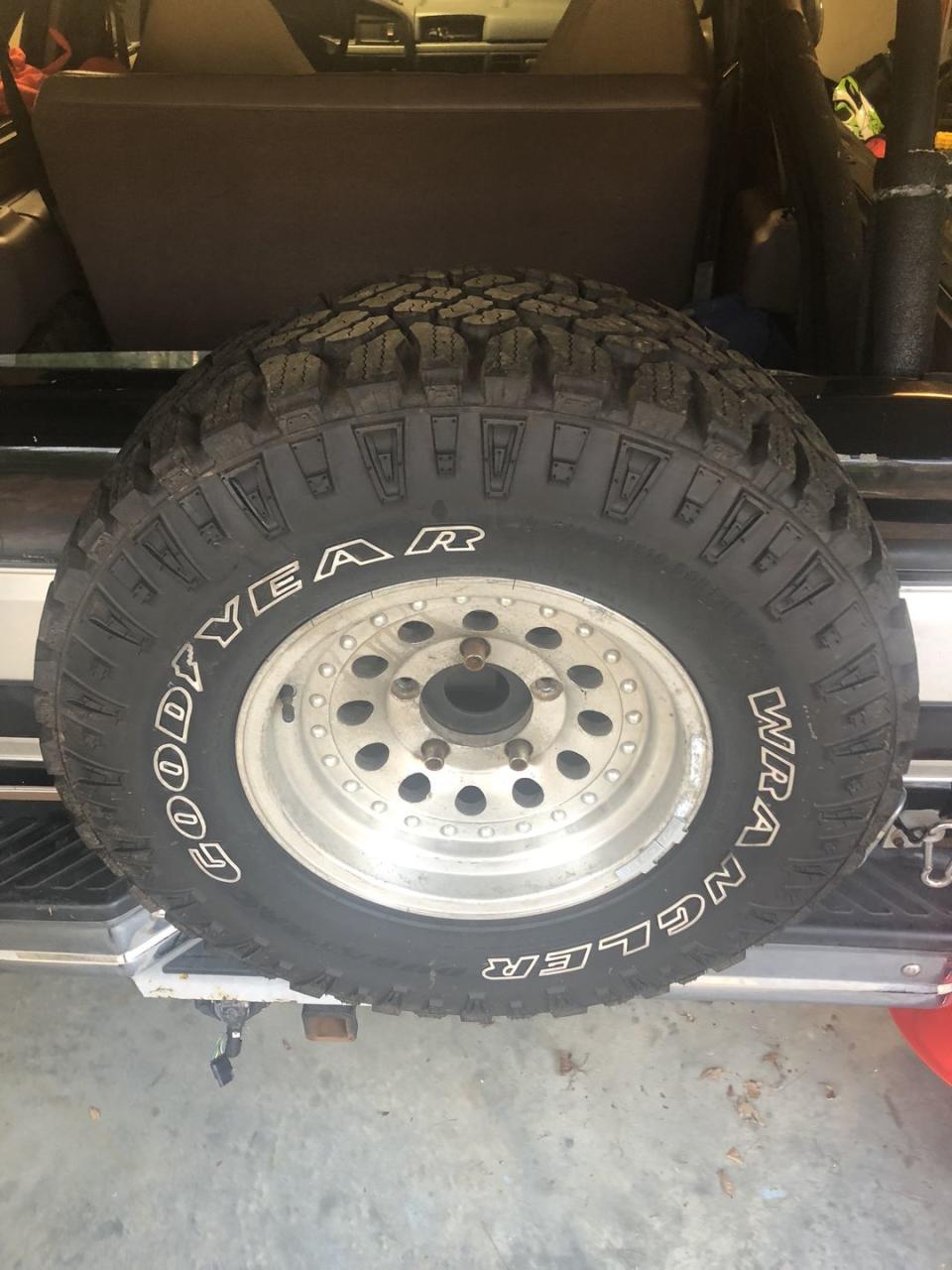
First, make a plan about where each tire will be rotated.
If all your tires are non-directional and your wheels are the same size, you can swap wheels diagonally front to rear, or move the fronts to the rear diagonal corner while moving the rears forward on the same side. If you have a full-size spare on a matching wheel, you can add that to the mix, too, swapping it for one of the other wheels on the car.
If you’ve got non-staggered directional tires but can’t get to a machine or a tire shop that can dismount tires, you can buy some time before having to swap sides by moving the rear wheels to the front and vice versa on the same side of the car. Likewise, with nondirectional staggered sizes, you can just trade sides at the front and rear.
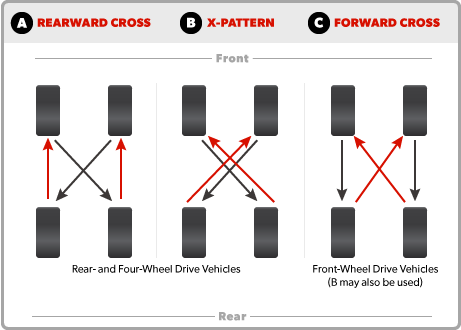
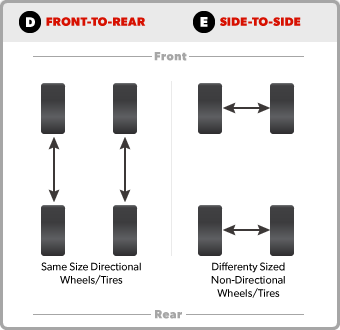
The first thing to do is take a grease pencil or paint pen and mark each tire with its appropriate corner. It may sound silly, but if you lose track of which tire is which then you defeat the whole purpose of this exercise. Take a moment to mark them up, and if looks matter, you may want to put this on the interior sidewall of the tire.
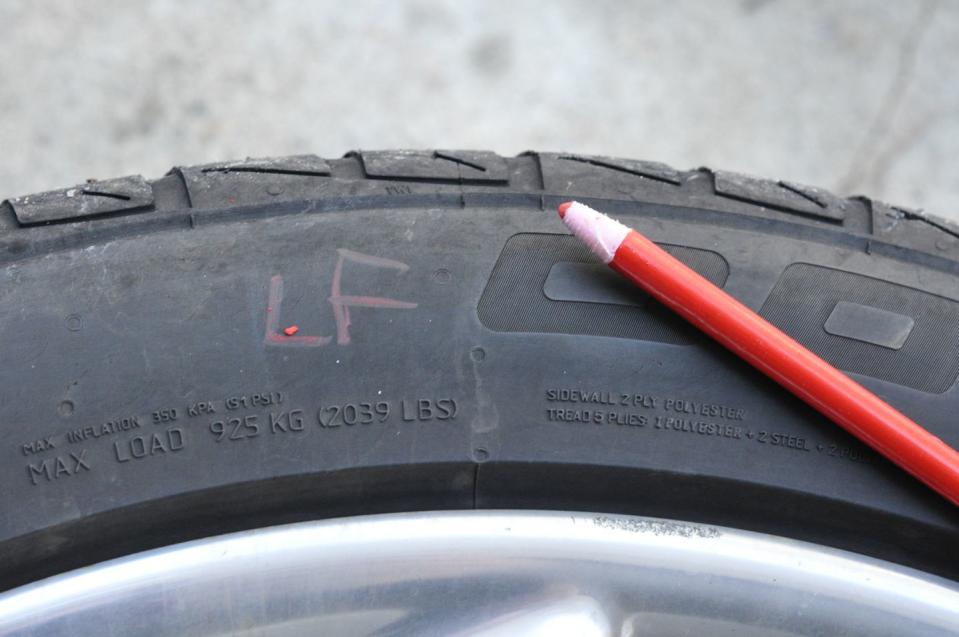
Then loosen the lug nuts. Always do this when the car is on the ground, as the ground provides some necessary extra resistance on the wheel that makes it easier to loosen the lugnuts. Make sure your car is in gear, with the parking brake set and the tires that will stay on the ground chocked in place. You don’t want the car moving. Then loosen each nut to where it’s relatively easy to spin the nut off once the car is off the ground, but leave the nuts on the studs for now.
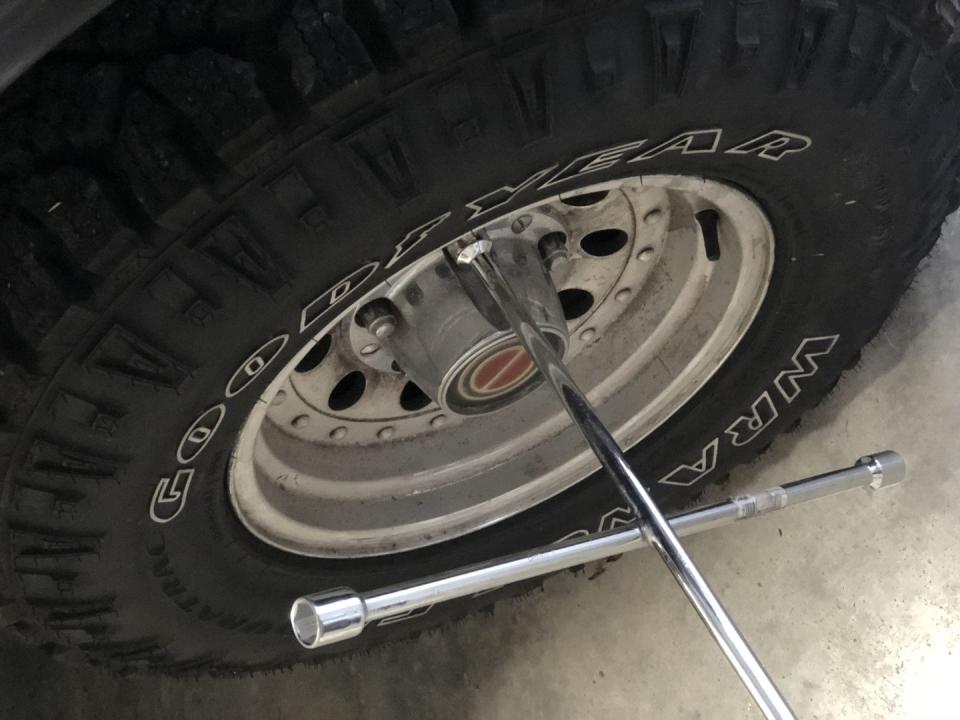
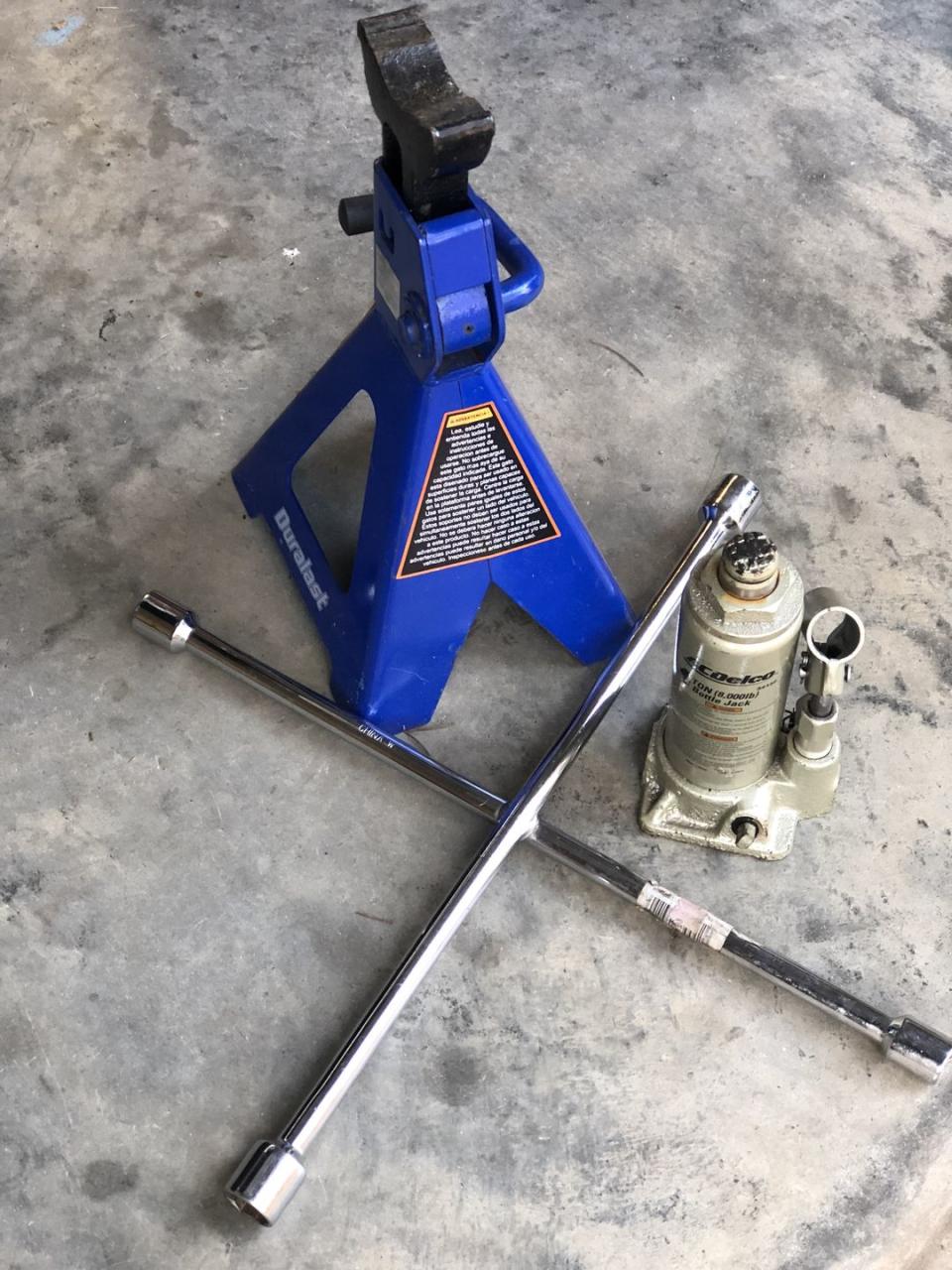
Find a jack point (usually just behind the front wheel opening at the front, and just ahead of the rear wheel opening at the rear) and jack the car up. If you don’t know where this is, your owner’s manual should be able to point you to the right place. There are often multiple jack points on a car, too. You can slide a jack stand under that jack point, assuming there are spots for both the jack and jack stand. If there’s not, you might have to jack the car from another solid spot, like under a differential or subframe inboard of the suspension.
Carefully lower the car onto the jack stand, making sure that the bottom of the stand is making even, solid contact with the ground.
If you don’t have a full-size spare so there’s an extra wheel to swap onto each corner as you work, and you’re rotating all four tires diagonally across the car, it is easiest to put all four corners on jack stands to do so. However, it’s always safer to have as many chocked wheels still on the ground as possible. If you’re swapping wheels from front to back or side to side, just jack up one side or axle at a time. It’s also a good idea to put something substantial (such as a wheel or a heavy block of wood) under one of the corners where you’re working, just in case a jack stand fails. You can never be too careful.
Once the car is solidly up on stands, remove the wheel at the first corner, moving the wheel where it needs to go. Then repeat the process at the next corner.
After you’ve rotated the tires to their final positions, hand-tighten the lug nuts and lower the car. Then use a torque wrench to torque the lug nuts to the amount specified by your owner’s manual and you’re done—until the next time.
You Might Also Like


